Drilling in Dallas
9 Days Until the End of the Dallas Gas Wars: What You Can Do
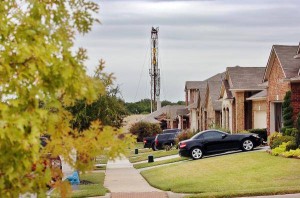 We only have 9 days to protect what it's taken us at least the last 12 months to build. The final Dallas City Council vote on a new gas drilling ordinance will take place on Wednesday, December 11th.
We only have 9 days to protect what it's taken us at least the last 12 months to build. The final Dallas City Council vote on a new gas drilling ordinance will take place on Wednesday, December 11th.
THIS WEDNESDAY – Tomorrow
December 4th
1 pm
Dallas City Council Mtg.
Dallas City Hall 6th Floor
Public Comment Being Taken on New Gas Drilling Ordinance
NEXT WEDNESDAY
December 11th
1 pm
Dallas City Council Mtg.
Dallas City Hall 6th Floor
Public hearing and VOTE on new Gas
Gas Drilling Ordinance
If you've come to City Hall on this issue recently, thank you, but we need you to show up again in the next two weeks and make sure our previous victories remain intact.
If you haven't shown up yet, or it's been a while, we really need some fresh faces to speak up and support the strongest ordinance we can get.
What's at Stake:
The 1500-foot buffer zone between drilling and compressor stations and neighborhoods.
This 1500-foot "setback" was supported by a 14-1 vote of the City Plan Commission in its recommendations to the City Council. It applies not only to gas drilling sites, but to large compressor stations too.
Flower Mound has a 1500-foot setback. The Lubbock Health Board has recommended a 1500-foot setback for that city. Denton has just voted for a 1200-foot setback.
Yet at least six city council members (Jerry Allen, Sheffe Kadane, Vonciel Hill, Tenell Atkins, Lee Kleinman, and Rick Callahan want to rollback that distance to allow drilling and compressor stations within just 1000 feet of neighborhoods and schools, and with "variances," as close as 500 feet.
Recently, old wells were activated in Denton that are as close as 600 feet to homes that were built since the leases were granted. According to press coverage last week, "residents in the Vintage neighborhood were not happy when they noticed "vibrations, noise and glare" about 600 feet from their homes…."
The disruption was so great that the City of Denton sued the gas drillers. "The actions of the Defendants are causing immediate and irreparable harm," the city's lawsuit said.
The Politics:
This is the kind of heavy industry these six city council members want to bring to Dallas neighborhoods, and they'll succeed if they can get Mayor Rawlings, Jennifer Gates and/or Dwaine Caraway to agree with them.
The rest of the council has made up its mind. It's the six backers of industry listed above vs. the six council members who voted to reject the Trinity East permits (Scott Griggs, Philip Kingston, Monica Alonzo, Adam Medrano, Sandy Greyson, and Carolyn Davis). Any motion needs 8 vote to win.
That's why these three Council members – Mayor Rawlings, Jennifer Gates, and Dwaine Caraway – will determine whether Dallas gets a more, or less protective gas drilling ordinance.
Mayor Rawlings has gone on record as opposing gas drilling in Dallas on principle. He's also gone on record saying he'd support the CPC recommendations. We need to make sure he keeps his word. He should be leading the charge for the most protective ordinance we can get.
Jennifer Gates ran on a platform of keeping drilling out of neighborhoods. We need to remind her of that and that she too needs to be leading the fight to keep the 1500 foot setback.
Dwaine Carway needs to be reminded that gas drilling is an environmental justice issue that will disproportionately hurt low income and minority areas of Dallas.
WHAT YOU CAN DO TO HELP:
1) Attend one or both of the next City Council meetings and ask the Council to pass the draft gas ordinance that the City Plan Commission recommended, including the 1500 foot setback.
2) If you haven't already, click here and send the Mayor a quick "click n' send" e-mail asking him to keep his word and support the Plan Commission recommendations iin total, including the 1500 foot setback. Please do this asap.
(We've added the e-mail addresses of both Jennifer Gates and Dwaine Carraway to the message to make sure they know how you feel.)
3) Contact Mayor Rawlings, Jennifer Gates and Dwaine Caraway on your own:
Mayor Rawlings
mike.rawlings@dallascityhall.com
Adam McGough, Chief of Staff
Phone: 214-670-7894
Dwaine Caraway
dwaine.caraway@dallascityhall.com,
214-670-0781
Jennifer Gates
Jennifer.gates@dallascityhall.com
Phone: 214-670-3816
4) Stay Tuned. They're more actions being planned leading up to the 11th so you can express your support for a strong ordinance. Keep on the lookout in your e-mailbox for alerts and on line here on the Downwinders' blog.
Scientific Support For a 1500-foot Setback
The 2012 Colorado School of Public Health study of cancer and non-cancer risks in the gas field, entitled "Human health risk assessment of air emissions from development of unconventional natural gas resources." This study concluded that residents living within a half-mile of a gas well had a 66% higher incidence of cancer than those living further away from a well.
The 2013 Emory University study found the risk of developing non-Hodgkin lymphoma increased among those living in proximity to facilities that release benzene. Natural gas facilities can release a lot of Benzene.
A 2012 report from Cornell University found that a mother's exposure to fracking before birth increases the overall prevalence of low birth weight by 25 percent.
Another 2012 Cornell University study that focused on animal health in the gas field concluded that reduced milk production, gastrointestinal, neurological, urological issues and sudden death are just a few of the symptoms experienced by livestock living near natural gas fracking sites.
Dr. Vikas Kapil of the National Center for Environmental Health at the U.S. Centers for Disease Control and Prevention gave a presentation in January 2012, saying "We do not have enough information to say with certainty whether shale gas drilling poses a threat to public health."
In addition, the Army Corp of Engineers recommends a distance of 3000 feet between structures like dams and levees and gas wells because of the danger of vibrations to structural integrity. If this distance is good enough for a dam, it's good enough to protect a home's foundation.
Dallas Ordinance Rolled Back Behind Closed Doors? 1500 Foot Buffer Zone In Danger on December 11th
 Wednesday's public staff briefing over the new gas drilling ordinance at Dallas City Hall was every bit as biased as you'd expect from a group that's been chafing under the Plan Commission's progressive recommendations since summer.
Wednesday's public staff briefing over the new gas drilling ordinance at Dallas City Hall was every bit as biased as you'd expect from a group that's been chafing under the Plan Commission's progressive recommendations since summer.
But it's the snow job that went on in he lengthy two-hour Executive Session that should really concern you – the one where the city attorney basically said Dallas would get sued if it adopted the Plan Commission's proposed 1500-foot setback that would separate neighborhoods from gas wells and compressor stations. It's when they're aren't any cameras or members of the public in the room that staff roll out their most spectacular spin. And the threat of a lawsuit is always good for a scare too.
As it happens, Flower Mound has saved Dallas a lot of trouble. That city also has a 1500 foot setback. And in fact, gas companies HAVE sued Flower Mound. And each time, Flower Mound has won.
And then there's Lubbock. Lubbock! A city where there are two political parties: Republicans and Libertarians. Lubbock's Board of Health recommended a setback of 1500 feet.
And yet, the Dallas City Council could end up running away from a standard even Lubbock doctors endorse come the December 11th vote on a new ordinance.
There are at least five very pro-industry members of the Dallas City Council who are now trying very hard to reduce that proposed 1500-foot setback to 1000 feet or less – Vonciel Hill, Jerry Allen, Sheffie Kadane, Terrell Atkins, and Rick Callahan. All of them were quite vocal in the Q&A session that followed the briefing yesterday, tripping over each other in carrying the industry's water, and all aiming at the 1500-foot setback, the linchpin of the Plan Commission's protections. You can read the DMN description of the sorry episode here.
What we still don't know after today is where the Mayor stands. He hemmed and hawed about public safety and fiduciary responsibility but didn't come down on one side or the other. Neither did Jennifer Gates. Or Dwaine Caraway. (Lee Kleinman was MIA.) These remain the only real unknowns, since citizen groups are expecting their six anti-Trinity East votes to hold here too. And of these unknowns, the Mayor is the most critical. He's on record as saying he'll support the CPC recommendations. Residents must make him accountable for that promise, or find themselves the victim of a policy that was made-up and decided behind closed doors.
To help you do just that, we've got a quick click and send e-mail you can use to tell Mayor Rawlings you want him to use his decisive vote to support the 1500-foot setback and the other provisons of the City Plan Commission draft ordinance.
It's not the only thing citizens need to do to mobilize between now and the December 11th public hearing and vote, but it's a start. Use it today.
Dallas Gas Ordinance Update: Council Briefing Wednesday, Council Hearing and Vote December 11th
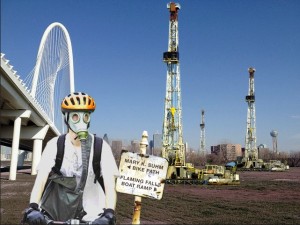 Mark your calendars now. According to City of Dallas materials published online Friday, the final council hearing and vote on a new gas drilling ordinance will take place Wednesday, December 11th.
Mark your calendars now. According to City of Dallas materials published online Friday, the final council hearing and vote on a new gas drilling ordinance will take place Wednesday, December 11th.
We might have a better idea about the likely outcome of that vote after tomorrow's briefing to the council by staff on the City Plan Commission recommendations that were adopted back in September. That's scheduled to take place between 9 am and lunch according to the council's agenda. Observers will be listening carefully to the comments and questions of the Mayor and Council to discern whether there are eight solid votes to adopt what's widely considered to be one of the most progressive gas drilling ordinances in the Barnett Shale, or whether opponents will have an opening to rollback key provisions, starting with the 1500-foot setback.
Rumor has it that work is already being done by at least one or two council members to write amendments to the Plan Commission draft to do just that. This is industry's last stand and they aren't likely to sit n their hands. Expect at least three to five hardcore driller-friendly council members to try and mount a charge. But they need eight to win.
As we've already noted, this is all now coming down to whether Mayor Rawlings will keep his word and support the product of the Plan Commission, as he said he would during his late August Trinity East soliloquy. If he likes the draft as is, chances are that's what we'll see adopted on the 11th. If he wants to tinker with it, then he'll allow that. The problem with opening it up to itemized changes is that nobody can predict what changes will win and what changes will lose, or how long such an amending process might take for such a detailed document. Things could get very messy and long.
Downwinders will be at tomorrow's staff briefing, trying to read the tea leaves like everyone else. We'll have a summary by tomorrow afternoon or Thursday morning. Stay tuned.
Dallas Drilling Update: It’s All About Holding Mayor Rawlings to His Word Now
“I am personally opposed to urban oil and gas drilling in Dallas.
To paraphrase Ecclesiastes, there is a place for everything under heaven, and I don’t think that place for drilling is in Dallas, in an environment like this.
We continue to grow, and there are generally too many unknowns in respect to urban drilling and its effects on our community’s health and safety. This city can be picky about what type of growth we have.
To that end, I will be supporting the efforts of our CPC on new gas drilling ordinances, to make sure the standards are such to ensure the safety of our citizens.”
– Dallas Mayor Mike Rawlings
August 28th, 2013
Statement before City Council vote on the Trinity East gas drilling and production Special Use Permits
On his way to vote in favor of allowing gas drilling in Dallas, the Mayor of North Texas' largest city seemingly endorsed a perpetual moratorium on gas drilling in Dallas.
And even as he endorsed a moratorium on gas drilling in Dallas, the Mayor also endorsed a City Plan Commission draft ordinance on gas drilling that still allows for it to take place, albeit under very selective conditions.
So which words from that August 28th declaration do we hold the Mayor to when the new gas ordinance comes up for a Council vote?
"I will be supporting the efforts of our CPC on new gas drilling ordinances"
That's all you need to know. There is no qualification there, no balance between the CPC draft and something else. Just full-throated endorsement of the draft, as is. Make him live up to this support in the form of a simple up-or-down vote on the entire ordinance and you've got one of the toughest new templates for how to regulate gas drilling in the state of Texas.
Forget about the first part. Even if you want a moratorium on drilling in Dallas, that's not the issue that will be up for a vote. Nor is there the slightest chance that such an option will appear as an alternative to the approval of a new gas ordinance, no matter how strongly Mayor Rawlings, or Scott Griggs, or Adam Medrano, or Philip Kingston personally feels about it. The choice is between the really bad old gas ordinance and the really good new gas ordinance.
Even if you think the ordinance could use improving (and everyone on this side of the aisle thinks it does), you don't have the votes on the council to improve it. Residents could only muster six "no" votes for the Trinity East fight. Fortunately, they only needed four. You need eight for each and every improvement you want to make to the gas ordinance. They aren't guaranteed.
Mayor Rawlings is one of only three or four mystery votes in the middle that determine the new ordinance's fate, and the most likely weather vane for the whole lot. As he goes, so probably goes North Dallas newcomers like Jennifer Gates and Lee Kleinman. Assuming residents can hold onto the "Trinity East Six," that gives you 8-9 votes. Then, seeing the winds shift, you don't know what other Council members you pick-up trying to get on the right side of things. Chances of improving the ordinance begin and end with the Mayor and what does the Mayor say? He's on the record as supporting the CPC draft, not the draft with some tweaks.
Of more concern to residents should be the eight votes that the other side might be able to muster to weaken some of the ordinance's key provisions by opening it up to individual itemized tallies. Industry starts out with at least five hard-core supporters. Add three votes to a rollback here or there, and the ordinance that it took months to make good might be completely unrecognizable by day's end. When you open up the draft to tweaks, you're taking a big gamble that you're only going to tweak it in good ways. There could be bad tweaks as well.
The safest, surest way to get what what industry is calling a de-facto moratorium on gas drilling in Dallas is having the Mayor agree to a single yes or no vote on the entire draft ordinance, an option he says he already supports. The new Dallas gas ordinance matches the lengthiest set backs in North Texas. It's tough on compressor pollution and location. It has robust disclosure language and insurance and bond requirements. It recommends a brand new air pollution off-set program for Dallas to explore. Is the ordinance perfect? No. But it's the best we can get with the votes that we have. And it's enough to keep drillers like Trinity East out of Dallas for good.
Improving it will take the assistance of Council members who aren't behind the dais yet. In the next municipal election cycle in 2015, almost half of the current City Council, and more than half of the ardent gas industry supporters, will be termed out. That's going to be the time to get the rest of your eight votes for a better gas drilling ordinance, and lots of other improvements as well.
Although there's still no date for an actual vote on the new gas ordinance, the city staff briefing – brace yourselves for one last Tammy Palomino appearance – to the Council is scheduled for the morning of Wednesday, November 6th at Dallas City Hall. If he Mayor wants this to go down smoothly, expect to hear a comment or two in support of the package as a whole being adopted. Residents might have a much clearer picture of where and how this will all be going down by session's end. Stay tuned.
Study Reveals Cancer Hot Spots Downwind of Canadian Oil and Gas Processing Centers
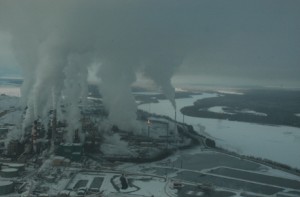 On the heels of the World Health Organization declaring air pollution a carcinogen, a study published this week from the University of California-Irvine and University of Michigan found higher levels of specific carcinogens in communities downwind of Canadian "oil, gas and tar sands processing zones", and higher rates of Luekemia and non-Hodgkin’s lymphoma among men living in those downwind communities.
On the heels of the World Health Organization declaring air pollution a carcinogen, a study published this week from the University of California-Irvine and University of Michigan found higher levels of specific carcinogens in communities downwind of Canadian "oil, gas and tar sands processing zones", and higher rates of Luekemia and non-Hodgkin’s lymphoma among men living in those downwind communities.
Despite their rural location, the recorded levels of the carcinogens, including 1,3-butadiene and benzene, were higher than in some of the world's most polluted cities. Examining area health records that went back a decade showed the number of men with leukemia and non-Hodgkin’s lymphoma was greater in the communities closest to the pollution plumes.
The authors strongly recommended that the industrial emissions be decreased to protect both workers and nearby residents.
“Our study was designed to test what kinds of concentrations could be encountered on the ground during a random visit downwind of various facilities. We’re seeing elevated levels of carcinogens and other gases in the same area where we’re seeing excess cancers known to be caused by these chemicals,” said UC Irvine chemist Isobel Simpson, lead author of the paper in Atmospheric Environment. “Our main point is that it would be good to proactively lower these emissions of known carcinogens. You can study it and study it, but at some point you just have to say, ‘Let’s reduce it.’
Co-author Stuart Batterman, a University of Michigan professor of environmental health sciences, agreed: “These levels, found over a broad area, are clearly associated with industrial emissions. They also are evidence of major regulatory gaps in monitoring and controlling such emissions and in public health surveillance.”
Dr. Batterman is familiar to Downwinders old timers as being the first scientist to take on the state's laughable "Health Risk Assessment" of TXI's burning of hazardous waste at it Midlothian cement plant. In what became known simply as the "Batterman Report," his mid-1990's critique of the official document was devastating in its scope and depth. It became a template on how to deconstruct any TCEQ attempt to gloss over the dangers of living downwind of a large polluter.
In this new study, Dr. Batterman and his colleagues monitored emissions in the rural Fort Saskatchewan area downwind of major refineries, chemical manufacturers and tar sands processors owned by BP, Dow, Shell and other companies in the so-called “Industrial Heartland” of Alberta. Taking random one-minute samples in 2008, 2010 and 2012, the results were very similar over time – amounts of some of the most dangerous Volatile Organic Compounds were 6,000 times higher than normal. Higher than in Mexico City during the 1990s or in the still polluted Houston-Galveston area.
Simpson said the findings were important for other residential areas downwind of refineries and chemical manufacturers, including parts of Los Angeles.
“For any community downwind of heavy industrial activity, I would say it’s certainly prudent to conduct surveys of both air quality – especially carcinogens – and human health."
Cement Plants and Gas Plays Affecting Ozone Levels In….San Antonio?
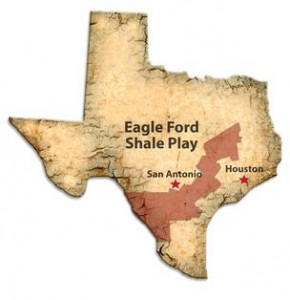 For decades DFW was the only major urban area in Texas to have its air quality challenged by the cement industry. Repeated modeling over the course of the last several local air plans showed that the concentration of the plumes from three huge cement plants in Midlothian could increase downwind ozone levels significantly. Part of this is the voluminous emissions produced by the kilns and part of it's location, location, location – the close proximity of these cement plants to the center of DFW. So much so that you can see their smokestacks from I-20 in Grand Prairie and Arlington.
For decades DFW was the only major urban area in Texas to have its air quality challenged by the cement industry. Repeated modeling over the course of the last several local air plans showed that the concentration of the plumes from three huge cement plants in Midlothian could increase downwind ozone levels significantly. Part of this is the voluminous emissions produced by the kilns and part of it's location, location, location – the close proximity of these cement plants to the center of DFW. So much so that you can see their smokestacks from I-20 in Grand Prairie and Arlington.
Then beginning in 2006 or so, the area's air shed began to be reshaped by the presence of gas production facilities as the Barnett Shale was opened up to exploitation from fracking, a process freshly exempted from just about every federal environmental regulation with passage of the 2005 Energy Act. But unlike large "stationary sources" like cement plants, these gas facilities were spread out over a large area, right in the middle of the Metromess, and were except from the "off-set" requirements of other large polluters. Even though their collective emissions were as large or larger than any other single industrial source, their decentralization allowed their operators to release their tons of pollution into the air without ever having to consider its impact on local smog levels.
That one-two punch of local industrial pollution flies in the face of the office park business image of DFW. Houston has traditionally been the city where industry has made it harder to breathe. In North Texas, it's supposed to be all about cars and trucks. But those cars and trucks lay a mostly uniform blanket of ozone over the entire area, whereas the gas production facilities and the cement plants are concentrated fire hoses of smog-forming pollution that can impact specific monitors over and over again.
And all of this has taken place during a time when the official federal ozone standard has been a relatively high 85 parts per billion. Beginning in 2015, the standard becomes 75 ppb, and it might drop to 65-70 by 2020.
Texas cities like Austin and San Antonio have had little problem complying with the higher standard, but now face obstacles to coming in under the wire of a 75 ppb rule.
For one thing, the only other large concentration of cement plants in Texas besides Midlothian is located along the I-35 corridor from Buda, south of Austin to North San Antonio. Because prevailing winds have often carried the pollution from these plants away from central Austin or San Antonio, they haven't been seen as much of a threat. But now urbanization is increasingly creeping westward into the downwind path of these plumes, adding some heft to the emissions and combining with them to elevate ozone levels.
And then there's the Eagle Ford Shale gas play, the new Wild West of fracking in Texas, taking place directly upwind of central San Antonio. Unlike the urban drilling in the Barnett Shale, most of the activity in the Eagle Ford is taking place in unincorporated parts of South Texas counties. There haven't been any reliable emissions inventory of the pollution coming out of he Eagle Ford, but it's considerable. Anecdotally, there seems to be a lot of flaring that DFW never saw. Because of the amount of production taking place, as well as its location upwind during the summer "Ozone Season," Central Texas is starting to sweat about its impact on its own air quality.
That concern has prompted a regional modeling exercise which is supposed to determine how much, if any, impact the drilling in the Eagle Ford is having on the Alamo City's air. Back in July, we reported that the preliminary numbers of this study showed that gas production was capable raising local ozone levels by as much as 3 to 7 parts per billion by 2018 – exactly when all Texas cities must be in compliance with the new 75 ppb standard.
Maybe 3-7 ppb doesn't seem like much. And it isn't, unless you're already at or above the new 75 ppb standard and that amount will put and keep you over that red line. Like San Antonio in 2013. The July headline in the San Antonio paper was unambiguous: "Eagle Ford drilling is polluting San Antonio's air"
But it looks like someone at the San Antonio Council of Governments is taking a page from DFW and TCEQ officials and downplaying those preliminary numbers from last summer.
Previous studies show that emissions of ozone-forming chemicals from sources other than drilling have dropped significantly since 2007 despite the city's population growth, said Steven Smeltzer, AACOG's environmental manager. Smeltzer attributes the improvement to new vehicle standards and voluntary reductions by local industries.
Preliminary numbers from the AACOG study also indicate that much of the problem lies in the Eagle Ford. InsideClimate News obtained a copy of the data, which have not been made public. The data show that during the months when San Antonio experiences the highest ozone levels—April through October—oil and gas development produced about half the amount of ozone-forming emissions per day as all other industrial sources combined.
Bella said the data came from an early version of the study that wasn't as thorough as later drafts. "My sense is they're really not worth using…They're not solid numbers."
He declined to comment on whether the numbers are close to the latest estimates. What matters isn't the number, he said, but the process behind the study. If the science isn't right, then it's "garbage in, garbage out."
Yeah, we know. Believe it or not, citizens had to literally force the TCEQ to consider the effect of the pollution from Midlothian cement plants before they discovered, wow, they really do have an impact. Likewise, it took Dr. Al Armendariz's 2009 study of Barnett Shale pollution for the state to even consider local gas sources might be a contributing factor to the DFW smog problem – although TCEQ officials are still doing their best to deny it. The largest purveyor of junk science in Texas is the Texas Commission on Environmental Quality. Remember that in 2012, TCEQ's computer model told us to expect the lowest level of smog ever recorded in DFW. Instead we got the highest levels recorded since 2008 or so. So yeah, GIGO.
That's why it's disappointing to see the Council of Government official try to use the same strategy with this new study – whose final edits will be made by TCEQ, not an independent entity. Just like with TCEQ's Wednesday's ruling against 7000 Dallas County doctors that said there's no link between smog and public health, Rick Perry's agency can't afford to admit the state's gas plays are making the state's air illegal and unsafe.
Like San Antonio, almost every other category of pollution in DFW has decreased over the last 6 years – except gas industry pollution. It's the one category of emissions that's grown and grown and grown – to the point where the state itself admitted that the industry was releasing more smog-forming Volatile Organic Compounds than all the trucks and cars on the road in North Texas. As DFW continues to linger in violation of an almost 20-year old obsolete ozone standard, it's the gas industry that is the logical culprit for the backsliding. It's the one variable that's going the opposite direction as all the others. But despite the overwhelming evidence to the contary TCEQ is busy defending the Shale from any charges that it has the least bit of impact on area smog, even to the point of ignoring basic air modeling chemistry.
San Antonio officials may want to deny the link between the Eagle Ford and smog in their city, may want to down play it, and they'll have plenty of rhetorical help from Austin. But when it comes to TCEQ rhetoric versus the real world, the monitors in the field tell the tale. Negligence doesn't make your air cleaner.
The Dallas Gas Wars Are Getting Noticed
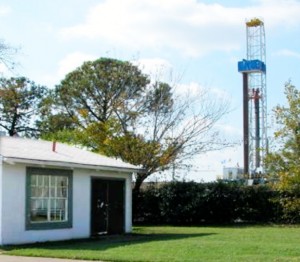 The Texas Tribune has a pretty good overview of the different ways Texas municiplaities are regulating gas drilling, including the contrast between industry-friendly Ft. Worth and a more skeptical Dallas:
The Texas Tribune has a pretty good overview of the different ways Texas municiplaities are regulating gas drilling, including the contrast between industry-friendly Ft. Worth and a more skeptical Dallas:
Meanwhile, industry representatives and some lawyers point to Fort Worth, 40 miles west of Dallas, as a model for balancing economic and environmental concerns. Between 2006 and 2012, the city took in nearly $264 million in natural gas revenue, including lease bonuses, royalties and property taxes on mineral leases.
Fort Worth’s ordinance — which limits noise, keeps most drilling 600 feet from homes and spells out duties for local inspectors — has grown to more than 60 pages from five. Most recently, the city tightened rules on gas compressors.
But environmentalists point to the city as a model to avoid. It is pockmarked with more than 1,700 producing wells, with pad sites nestled beside sports fields, homes and schools.
“It’s gradually chipping away the quality of life,” said Don Young, a 62-year-old Fort Worth native and longtime activist, who worries that drilling has worsened air quality.
In 2011, a study commissioned by the city concluded that drilling exposed residents to harmful pollutants like acrolein, benzene and formaldehyde, but not at dangerous levels.
Ridley said Fort Worth had come up several times in the planning commission’s talks, but mostly when suggesting stricter regulations. “We arrived at what we thought was an effective means to protect people,” he said.
New National Report: Texas is Source of Over 50% of Total US Fracking Pollution
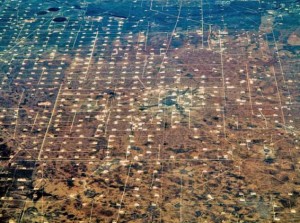 While most of the national publicity surrounding fracking over the past couple of years has involved documenting its encroachment into the Midwest and East Coast, a new first-of-its-kind report demonstrates why Texas is still the center of the oil and gas industry's universe.
While most of the national publicity surrounding fracking over the past couple of years has involved documenting its encroachment into the Midwest and East Coast, a new first-of-its-kind report demonstrates why Texas is still the center of the oil and gas industry's universe.
Last week the Environment America Research & Policy Center released "Fracking by the Numbers: Key impacts of Dirty Drilling at the State and National Level." As far as we can tell, it's the first systematic collection of quantifiable state-by-state data on the environmental costs of fracking in the entire US – the amount of water used in drilling operations, the amount of air pollution produced, the amount of acreage devoted to leases, etc.
Of course, the numbers all come from either the annual self-reporting industry performs for state and federal regulators, or those regulators themselves, so there's a good chance they're being under-estimated. Nevertheless, the total numbers are still huge and shocking. And what really catches the eye in the state-by-state breakdowns is just how much the operations around us here in Texas contribute to those huge and shocking numbers. We're not just the Belly of the Beast. We're the belly, upper and lower intestines, bowels, and open-throated mouth of the beast.
Number of Wells:
Of the almost 82,000 wells drilled across the country since 2005 (when the Energy Act with the "Halliburton Loophole" included was passed and signed), fully 34,000 have been drilled in the Lone Star State. The second closest state is Colorado with a little over 18,000.
Think things have slowed down and moved elsewhere? Of the 22,300 wells drilled since 2012, 13,500 of them have been in Texas. Colorado again comes in second with 1,900.
Acres of Land Damaged:
130,000 acres out of a US total of 360,000 acres. Colorado is second with 50,000.
Amount of Water Used
Out of a national total of 250,000,000,000 gallons of water used to frack wells, Texas accounts for 110,000,000,000. Pennsylvania is second at 30,000,000,000 gallons.
Amount of Waste Water Produced
Out of a national reported total of 280,000,000,000 gallons (that's 280 billion) of unusable toxic wastewater that needed to be disposed of permanently in injection wells, Texas accounts for 260,000,000,000 gallons. North Dakota is a distant second with 12,000,000,000.
Air Pollution
None of these figures includes totals from other kinds of facilities in the gas cycle, like compressors or pipelines, or storage tanks – just drilling pad operations.
Particulate Matter
Approximately 8,000 tons in Texas out of nationwide total of 13,000.
Nitrogen Oxide (smog-forming)
100,000 tons in Texas out of 170,000 for the entire US.
Carbon Monoxide
153,000 tons in Texas out of a US total of 250,000 tons.
Volatile Organic Compounds (smog-forming and toxins)
14,000 tons in Texas out of 23,000 nationwide.
Sulfur Dioxide (acid rain, respiratory irritant)
300 tons in Texas out of a total of 600 tons nationwide.
Greenhouse Gases
40,000,000 tons in Texas out of a US total of 100,000,000.
When a single state accounts for more than half of the wells, the waste water, and the entire country's air pollution burden from fracking, you understand why campaigning against the industry's practices in Texas is the political equivalent of fighting behind enemy lines. It makes recent victories like the defeat of the Trinity East permits and the adoption of a tougher draft Dallas gas ordinance all the more remarkable, and important.
Beginning in 2006, many of us were caught off-guard by the invasion of wells that swept eastward into the metropolitan DFW area. We didn't know enough to know what questions to ask, or we didn't want to ask them. Now, living in the largest urban gas play in the US, and inventorying these kinds of mind-numbing statistics, we don't have any excuses. Fracking represents one of the most profound environmental and public health challenges ever to confront DFW or Texas. The most important question now is what we intend to do about it.
Ed Ireland is Down to the Scientific Stems and Seeds
 Maybe the Barnett Shale Energy Education Council thought it was being cute by sending their latest "study" out on the day Gasland II had its theatrical premiere in North Texas.
Maybe the Barnett Shale Energy Education Council thought it was being cute by sending their latest "study" out on the day Gasland II had its theatrical premiere in North Texas.
Or maybe they knew what an egg they were laying. It's a basic rule of PR that you don't send things out on a Friday that you actually want people to see. And if you were the industry, even you might be a little embarrassed about this thing too. As of Tuesday afternoon, the group was so proud of it, they hadn't even posted it on their on website. As far as we can tell, it's details have only appeared within stories from in-house publications like the Star-Telegram.
Imagine the pitch on paper, if there was one. "We'll fund our own research so that it'll have maximum credibility. And since we can't find a reliable academic institution to do it for us, we'll have to contract to something called ToxStrategies out of Houston. We won't do any new research at all. We'll just regurgitate the state's own lame monitoring data. We'll take the seven stationary monitors that have screened for air toxics in North Texas – you know, the ones that ony take samples every sixth day (when they were operational), and let that represent the entire Barnett Shale. We'll only look at some Volatile Organic Compounds readings. We won't connect any gas drilling or production taking place to a timeline to show what activity was actually going on around these monitors, so they'll be no way to correlate our presence with increases or decreases in pollution. And of course, since we're using TCEQ monitoring data, we can also use their unsupported claims that there are "safe levels" of benzene and other carcinogens when the most recent science is in direct opposition to that discredited idea."
And that's about it. Old TCEQ monitoring data that may or may not have any correlation to drilling activity is used to once again say, "Look Ma, no health effects!" Think of it as the "Titan Study Part 2."
Industry and regulators always want to start at the smokestack end of things and draw assumptions of human health from that end. As long as pollution is below certain levels that they just know are "safe" (until one day' they're not), they connect the dots and say there is no human harm occurring. They really don't want to actually go out and test that theory among real people on the ground living next to these facilities. They might find it doesn't hold up very well. That's why they want to stick to reviews of monitoring data.
Citizens always want to start from the other end – real life. Let's test that hypothesis about safe levels of poisons and see what the rate of asthma, cancer, miscarriages there are in the neighborhoods around and downwind of these sources. Are the rates of illness higher or lower the closer you get to a facility? Is there any correlation between the types of illnesses and any chemical in the atmosphere or water, no matter how safe the exposure level? And you know what, when it comes to fracking, there seems to be a lot of difference between what the studies that rely on real life say versus what the studies that rely on measurements say, like this "new' old effort released about a quarter to five on a Friday afternoon.
But hey, It can't be the BSEEC without the BS.
Big D’s BFD
 Did you feel the ground shifting under your feet yesterday around 5 pm? It was another one of those local earthquakes caused by fracking. The epicenter was Dallas City Hall. Damage to the gas industry's rhetoric and credibility was extensive.
Did you feel the ground shifting under your feet yesterday around 5 pm? It was another one of those local earthquakes caused by fracking. The epicenter was Dallas City Hall. Damage to the gas industry's rhetoric and credibility was extensive.
By a vote of 14 to 1, the Dallas Plan Commission pronounced the permissive "Fort Worth Model" of regulating the drilling and production of natural gas in the Barnett Shale dead. The passing was definitive. As John Cleese might say, "This paradigm is no more…it has ceased to be…this is an EX-paradigm."
It didn't go down without a fight. Up until the very final hours of debate over language in the City's proposed new gas ordinance, staff was still offering weaker versions of rules to Commission members because "that's the way Fort Worth did it." They were all rejected in favor of stricter standards as part of what has the potential to be the most protective ordinance in the Barnett Shale.
Now all we have to do is get eight Dallas City Council members to help us realize that potential.
The draft passed yesterday isn't 100% of what residents want, and in one case doesn't even match the level of protection Dallas itself started out with in 2007. It still provides paths through the bureaucracy for drilling in parks and flood plains, instead of outright bans, and despite staff assurances, the chemical disclosure language isn't foolproof. But to see it only through the lens of what it's not yet doing is to ignore the huge impact of what it already does. Coming from the largest city in the Shale, the Dallas draft immediately offers a modern, tougher alternative to Ft. Worth's submissiveness for dealing with the problems of mining gas in urban environments. To quote our Vice-President, it's a B.F.D. Some of the highlights include:
1) A 1,500 property line-to-property line setback from neighborhoods and other protected uses, matching the most protective setbacks in the Barnett Shale. It can only be reduced to a minimum of 1000 feet with a variance, and that's only possible with 12 out of 15 council votes. Notice of any permit must go out in English and Spanish to all mailing addresses within 2000 feet and the applicant must hold a neighborhood meeting where the project is fully explained.
2) Electrification of all motors and engines on a drilling site. If operators want to make an exception and use combustion engines, they have to show why electrification isn't feasible, and the City has to agree.
3) Tough restrictions on where gas compressor stations can locate – only in heavy industry zoning districts, with the same 1,500 foot setbacks from neighborhoods and all other protected uses, fully enclosed, and they must use electric engines, not diesel or gas. Thanks to some quick pushback by residents and their allies on he Commission, we were able to win back all the rules that staff had excluded in their first take only 24 hours before the vote.
4) A ban on any injection wells in the City of Dallas.
5) A ban on fracking waste pits.
6) Requirements for a road repair agreement before a permit is even considered. This is above and beyond any other insurance or bonding requirement.
7) A recommendation to the Council that it establish a local air pollution off-sets program that would include natural gas facilities. Such a program would be the first of is kind in the nation and close a Clean Air Act loophole that exempts these facilities from participating in the federal off-sets program for smoggy "non-attainment areas."
8) Baseline testing of water, soil, air, and noise at every proposed site.
9) Individual non-toxic "tagging" of all fracking fluids used. Every operator will be required to put their unique chemical signature within the concoction they're pumping into the ground so that if any of it goes where it shouldn't, the offending well can be identified. It's DNA testing for fracking.
10) A recommendation to the Council that during drought conditions, it either charge substantially more for city water that's being used for fracking, or ban the use of city water for fracking all together.
11) A recommendation that the Council demand an additional letter of credit from operators beyond any other insurance or bond to cover uninsurable intentional acts of contamination, i.e. dumping waste into the Trinity River.
We're not in Cowtown anymore.
(There's not an online version of the final language up yet. We'll let you know when there is so you can look this thing over yourselves).
City attorney Tammy Palomino, always a reliable source of information, stated on the record that she believed the draft's language about chemical disclosure would cover all trade secrets, but we're not so sure. That's why we'll be asking the Council to add five simple words to this section that Ms. Palomino didn't: "with no exceptions for trade secrets."
Instead of banning drilling in the floodplain, the proposed ordinance makes it impractical, though not impossible. An operator would have to get a fill permit from the city, and approved by the Army Crop of Engineers, to build a mound that would elevate the entire drilling pad site out of the floodplain. Anyone who's seen the footage from Colorado's flooded gas plays over the last couple of weeks can identify the folly of this approach. What's to keep flood waters from eroding the elevated mound and taking the entire pad site down stream? Only the lack of a kind of levee-to-levee flood we've seen in Dallas before.
Park drilling provided the day's lesson in pretzel logic. A "protected use" includes a recreation area, "except when the operation site is on a public park, playground, or golf course." Then it's perfectly fine to have rig next to the swing set. Got it?
This is less protective than the original Dallas Park decision that preceded the notorious Suhm secret agreement with Trinity East. It called for the leasing of a park's mineral rights but banned surface drilling in any park. You could go under but not on. That's still the most sensible compromise but it went floundering for support yesterday.
Instead, the Park Board will have to request the City Council to hold "Chapter 26" public hearing, after which there must be a 3/4 vote of approval by the Council that officially concludes there's no other possible feasible use for the park land other than gas drilling.
Listening to the comments from many Commissioners right before the vote, one got the feeling that if they had to do it all over, they might not be so equivocal. Nevertheless, they all voted for the more convoluted approach. It's the most flawed part of the ordinance, especially in light of the outcry over allowing any drilling in any public park during the Trinity East fight.
With those exceptions, it was a banner day for residents who've been fighting this good fight for over three years now. It was the kind of day that after Trinity East's main lobbyist whined that the company just couldn't get the electrical hook-ups they needed (in the middle of Northwest Dallas by a major Interstate) during the public hearing right before the final vote, an influential conservative Commissioner successfully moved to amend the completed draft to make the section on mandatory electrification of compressor stations stronger. Ouch.
It was the kind of day when the only ally industry could muster among the 15 Plan Commissioners was the sometimes coherent Betty Culbreath, Dwaine Caraway's brand new gift to Dallas residents. Culbreath said she couldn't vote in conscience for a document that required so much from industry. She felt so passionate about the issue, she missed most of the Commission workshops over the past month or so where the ordinance language was debated. It'd be laughable except the council member who appointed her is now the Chair of the Council's Environmental Committee.
There's no official news about the timeline or process the Council will use to consider the draft now that it's been delivered to them. Despite the mostly winning day residents had on Thursday, its sobering to remember that we only got six votes to deny the Trinity East permits. We need at least two more to make sure this good ordinance stays intact, or gets even stronger.
Such a lopsided Commission result gives us a great running start to get those votes. Backsliding by Council members will be hard to pull-off publicly, although let's face it, some seem immune to embarrassment on this issue.
Cowtown circa 2008 will always be the industry's preferred template for regulation, because they mostly wrote the rules. Residents in the Shale now have a much more citizen-friendly 2013 Big D model they can use for counterpoint – if we can win ACT III of the Dallas Gas Wars.

